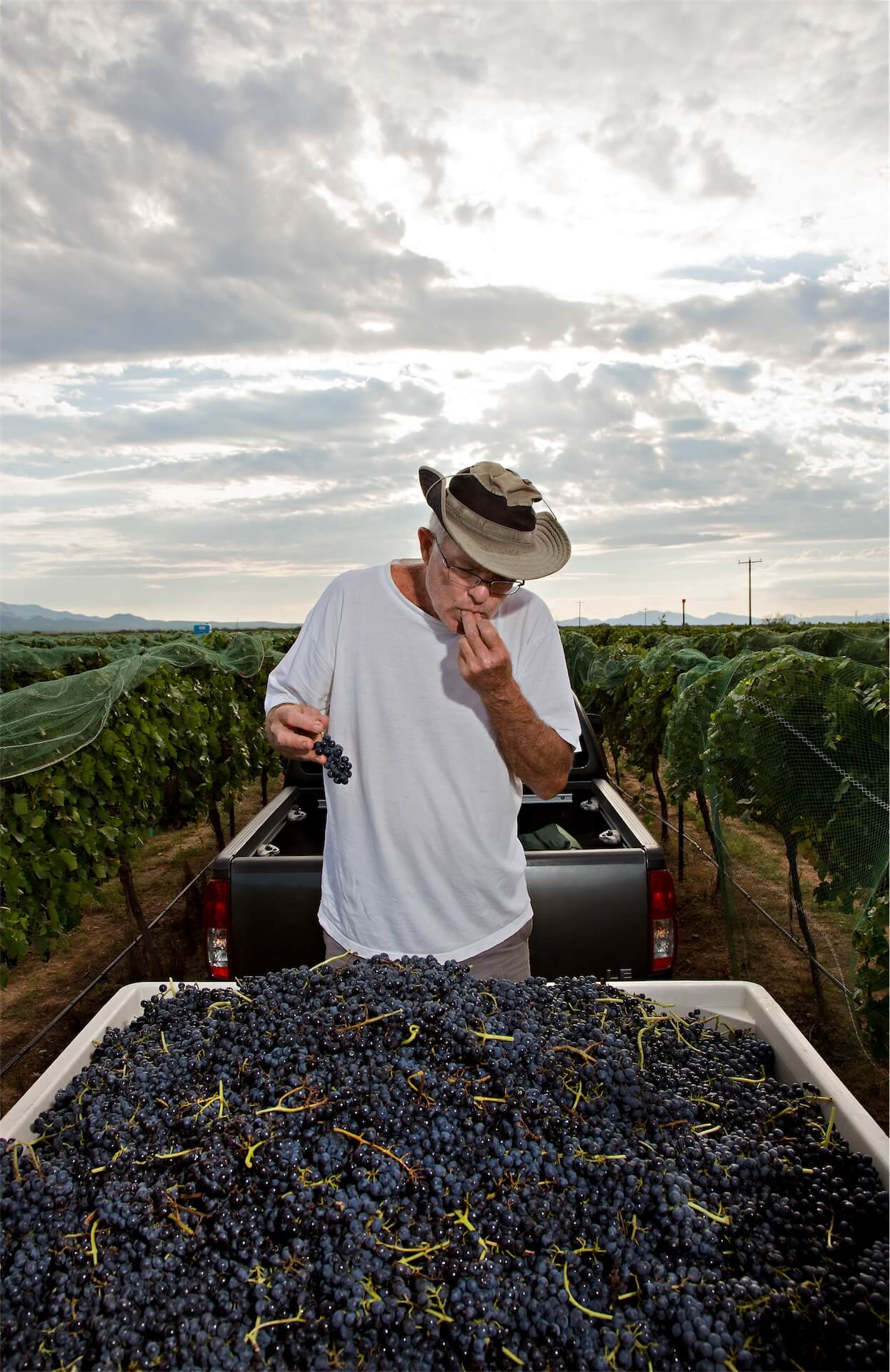Winemaker Sam Pillsbury shares his memories of place, and how that shaped the wines he creates
By Sam Pillsbury
It was behind our old farmhouse in the woods outside of Boston, walking our garden at age 4, rows of peas towering above me, picking those fresh pods, crunching the beans inside, the sweetness from chomping fresh corn, and baby tomatoes exploding in my mouth—that was the start of my reverence for nature.
How it all started
After a late spring snowfall, we would tap the Sugar Maples; my dad would make a bonfire underneath a cauldron, the sap reducing to maple syrup. He would ladle some out, fling it on the fresh snow, which made an exquisite tangled candy.
Soon after we flew from New York to St. Croix. Inside the walled gardens of our hilltop home, I found a squishy lump surrounded by buzzing bees. I picked it up and sucked at the overripe, dripping fruit. It was my first taste of ripe mango, and it was as far from a fresh apple as you could find.
St. Croix
At Sweetbottom, a blindingly white deserted beach on St. Croix, we would snorkel in the radiant water collecting coral fans. You could reach out and almost touch the lean, cruising barracuda, and see for what seemed like a mile underwater.
Sailing to Buck Island near St. Croix, a gust would heel the boat over. I feared crashing onto the jagged coral underneath, or onto the three massive anchors under us, cut loose from Spanish Galleons escaping a sudden hurricane. My dad, walking up the driveway, waved a bottle of the local Cruzan rum, saying, “A buck” with a huge grin.
Oxford Maryland
Next, Oxford, Maryland, which was right on the water’s edge of the Chesapeake Bay. Here, search the swamps for wild asparagus; tow the bounty in my wagon, knocking on doors to get the dough to buy a 5-cent Coke from the humming red machine on the corner.
Chesapeake Bay Skipjacks would sail by in the saline breeze to their fishing grounds, the chug-chug of oyster boats passing.
There was a fire in the crab factory. Wire baskets with steamed fresh crab pushed onto the sidewalk, and grabbing handfuls of this juicy flesh and stuffing it in our mouths, this was not Massachusetts or St. Croix.
Then in Swarthmore, Pennsylvania, the fragrant drifting smoke from burning leaves. There was never any such smell in Oxford or the Caribbean.
Our property in Massachusetts
Back in the Massachusetts wood, a stream ran through our property. It was flanked with wild blueberries. We would catch tadpoles, while the half-gallon jars of apple cider from nearby orchards that we brought would be
slowly fermenting and giving off a spritzy, pungent delight.
I would roam the woods, finding flint arrowheads in the brooks, and imagining who hunted these same paths centuries ago. We would also ice skate on the frozen streams and lakes, as well as the nearby famed Walden Pond, making fires on the ice to cook hotdogs and marshmallows.
Suddenly at age 13 we were on an Italian ship, heading to New Zealand, eating glorious pastas, sipping luminous tumblers of chianti, and drowning in multilayered, spongy, creamy deserts called tiramisu.
Traveling through Italy
My family and I travelled through Italy, and everything we ate was new and exotic. Standing on the rocks paving the Appian Way, I dreamed of the people who had travelled this ancient road for thousands of years.
We flew into Wellington, New Zealand from Sydney, Australia. It was raining when we boarded a steam train for the overnight trip to Auckland. I leaned out the window, bathed in the steam and smoke from the engine, entranced by the native bush and impenetrable rainforest, utterly unique to New Zealand. From here came the pungent Pohutukawa honey, the floral Rewarewa, and the intense, fragrant Manuka honey, dark, tasty, and famed as a natural antibiotic and miraculous medicine.
Then there was the fish ’n’ chips at the Bay of Islands—sweet, fresh snapper fillets coated in a crunchy toasted batter, golden chips, a little soggy but dosed with crunchy salt. I had never had anything like it. I thought “chips” were French Fries that came frozen in a packet.
We drowned in New Zealand butter, fresh thick cream from grass-fed cows; actual baby lamb; wild pork; venison; red juicy tamarillos; feijoas; freshly baked, sweet, creamy Lamingtons; and bags of Licorice allsorts.
Sailing the coastline every summer, feasting on freshly caught native fish, chipping oysters off the rocks, sucking the salty tide-fresh flesh, twisting off the Green Lipped Mussels, diving for Abalone and Scallops—those are things I remember.
The later years
Years later, we camped in the sub-tropical far north at Ahipara—not a town but the Maori name for the southern end of 90 Mile Beach, an endless stretch of flat, hard sand stretching to the northern tip of the country, and an official road. There is a small restaurant there for campers run by a Dutch couple. Everything came right there from the sea, the beach, or the small garden they had planted. I had never seen this before. It was as if a giant door suddenly swung open for me.
Later, hosting my movies at film festivals in Europe, I would rent a car and escape the horrors of Cannes into the exquisite south of France, find a small village, a small inn. There, the food and wine were new and fabulous. It was local and it was unique. I cherished that. I loved identifying, and cherishing the value of where things came from, how they honored that, and how that was part of their identity.
Vancouver Island
Years later, shooting Free Willy 3 on Vancouver Island, we found a restaurant where all the food came from the sea at their doorstep or their fabulous gardens. You took a bowl and picked the organic veggies you wanted for your salad. This made a big circle for me and it made total sense. I realized that “place” is everything—it’s about authenticity. It’s a kind of truth. In the wine world, we call it terroir.
There’s too much generic food and wine in the world. I wanted to make a wine, and grow food, in one place, without chemicals from a lab in California. I like knowing where my food comes from and who produced it. This is how we make our wines.
Keep up with all of Green Living’s content by visiting our website.
Sam Pillsbury is an American born, New Zealand raised film director with a masters in English Literature. He moved to Phoenix after making some 32 movies, and started growing and making wine in 2000 in high desert Cochise County. He is a gear head, a sailor, a diver, a guest chef, and is married with three children. He spends his time in NZ, L.A and Arizona.







